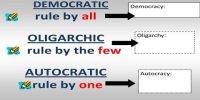In 2016 Apple started monetizing subscriptions to more apps – and tempted developers with an 85/15 split on revenue from subscribers who have been subscribing for more than a year – subscription monetization and retention felt like a holy grill for app developers.
So soon, Google Mobile OS could present itself as an example of healthy competition for developers in the islands. However, how does that partition work in most applications? As it turns out, the 85/15 split – which at any time interested in mentioning developers ’complaints about Apple App Store rev shares – will not have a meaningful impact for most developers. Because churning.
No matter how great an application is, customers keep churning. Sometimes this is due to the expiration of a credit card or some other billing problem. In addition, sometimes it gives more breaks and the user comes back a few months later. However, most of the churning comes from customers who decide for whatever reason the app should no longer priced.
If a customer churns out before the one-year mark, the developer never shares 85%. Even if the user re-subscribes, the app and Google reset the clock if the subscription has lasted more than 60 days. Top mobile apps like Netflix and Spotify report rates in lower single digits but they are outliers. According to our data, the average churn rate for subscription applications is about 13% for monthly subscriptions and about 50% annually.
The monthly subscription churning is usually a bit more in the first few months, and then it stops. However, average churn of 13% only 20% of customers cross that magical 85/15 edge. The monthly subscription churning is usually a bit more in the first few months than it stops. However, average churn of 13% only 20% of customers cross that magical 85/15 edge. In reality, this means that for all the hype surrounding the 85/15 split, very few developers are going to see a significant increase in revenue.
















